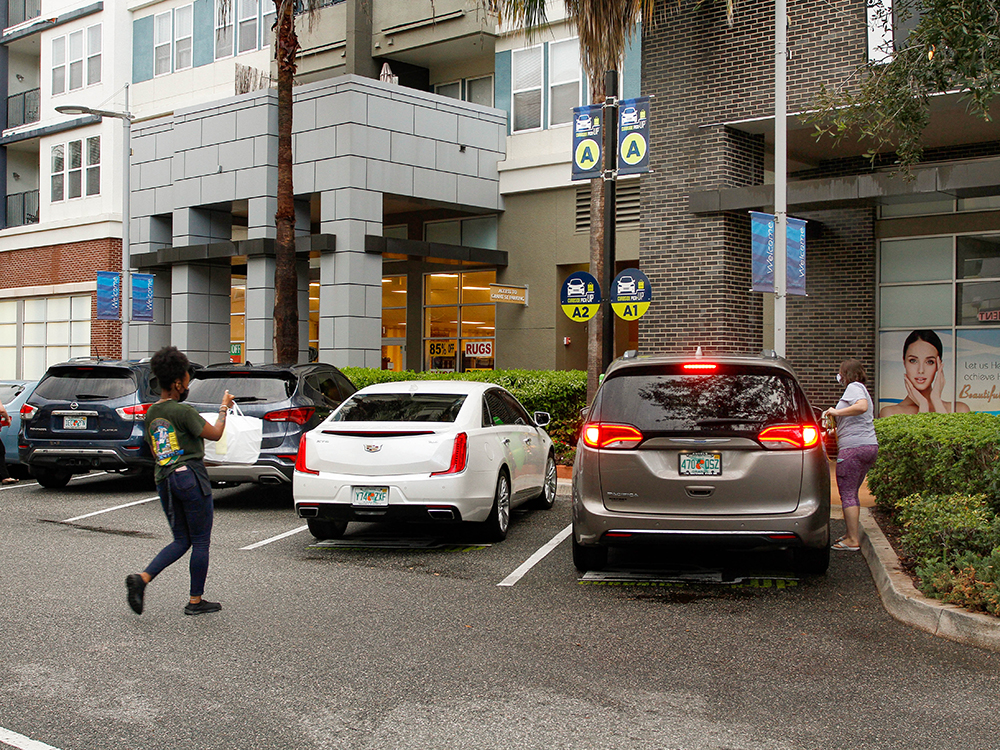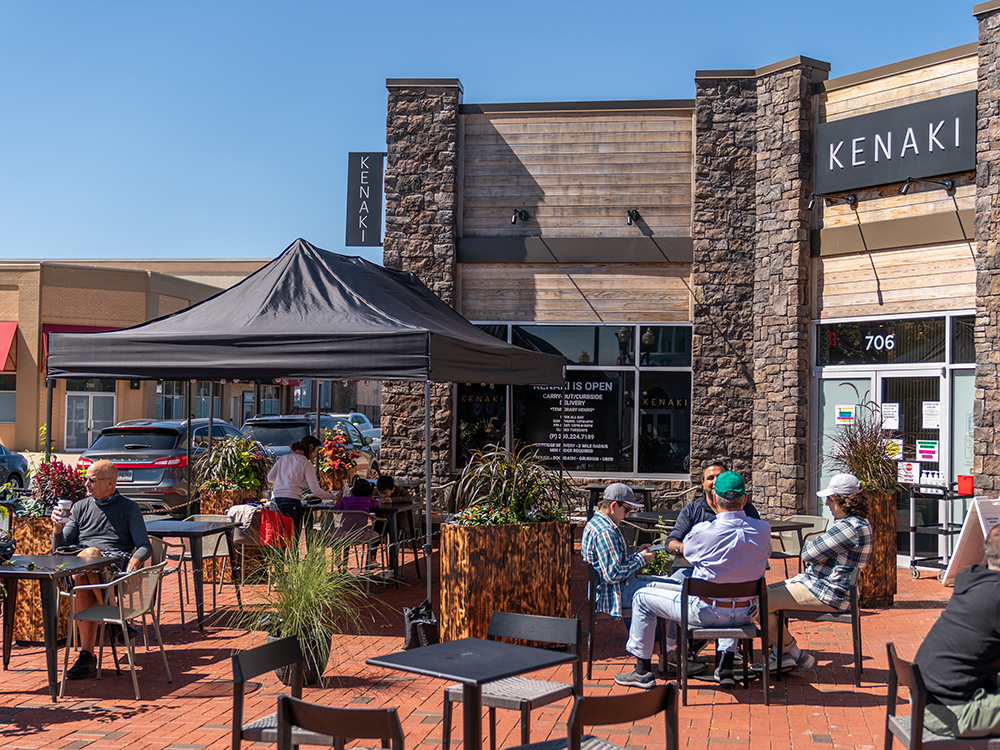Looking Ahead: The Future of Shopping Centers
In the first article of our 2021 outlook series, Kimco Realty President & CIO Ross Cooper shares his insights on upcoming retail trends and discusses successful strategies in the context of the COVID-19 pandemic.
As one of the oldest and largest REITs in the U.S., Kimco Realty owns interests in more than 400 shopping centers and mixed-use assets comprising 70 million square feet of gross leasable space in major markets across the country. And despite the extraordinary circumstances surrounding the COVID-19 pandemic, 97 percent of Kimco Realty’s portfolio remains open and operational.
Ross Cooper, president & CIO at Kimco Realty, talks about the challenges the industry has faced this year and shares his insights on the future of shopping centers as we move closer to 2021. He also discusses retail trends to keep an eye on and successful strategies that generate strong sales performance.
READ ALSO: Where Can Retail Go From Here?
The shopping sector has evolved in recent years away from apparel and department stores to experiential uses. How do you see that changing due to the pandemic, which has disproportionately affected experiential tenants?
Cooper: There is no doubt we have seen the continued evolution of brick-and-mortar shopping centers to focus on experiential uses such as food and beverage, health and wellness, and entertainment. While the pandemic has been a challenge for a lot of these users, I have a high level of confidence that they’ll bounce back strong.
There is a real pent-up demand to get back to the in-person meeting places as we are truly social animals, but let’s not forget that while these uses have been big drivers of traffic in recent years, they have been alongside the robust demand from many other categories as well. Whether it be grocery, off-price apparel, home improvement, beauty, hobbies and crafts etc., the mix of essential retail, everyday goods and services, and the experiential component is the winning mix at the end of the day.
Are open-air shopping centers the future of physical retail or do you think this trend is temporary, at least in cool-weather regions?
Cooper: Absolutely! We have strong conviction that the future of retail is in the open-air format. This sentiment started well before the pandemic and will continue well beyond it, as well. The access, convenience, parking and visibility all lend themselves to the benefit of the consumer. At the end of the day, the retailer is looking to capture the consumer in the most efficient way possible and the open-air product type does just that. Factor in the ability to buy online and pick up in-store—and now curbside pickup which we offer in almost every one of our centers—we believe this trend is here to stay.
Rent collections have been an issue throughout the sector. According to S&P, Kimco collected rents at 72 percent of pre-pandemic levels in the second quarter. Are collections improving?
Cooper: We continue to see a month-over-month improvement with our rent collections and are now back around 90 percent. While we are not all the way to pre-pandemic levels, we are pleased with the continued progress. The ability of a retailer to be successful and generate strong sales performance coincides directly with consumer confidence and comfort level in visiting the stores. We have put measures in place to do our part to provide safe environments and have seen those efforts pay off. There is a lot of discussion in the industry around repositioning vacant retail space. What’s the best strategy for empty spaces and what types of tenants or developments fit best in that space?
There is a lot of discussion in the industry around repositioning vacant retail space. What’s the best strategy for empty spaces and what types of tenants or developments fit best in that space?
Cooper: Well before the pandemic, we crafted a strategy for our portfolio to adapt to the changing habits and uses of space. We sold out all of our secondary and tertiary market locations to focus on top metropolitan statistical areas throughout the country. Being located in densely populated areas within close proximity to a significant number of residents and workers has positioned us to take advantage of the highest and best use of the property.
You have seen examples from us where we have created a mix of uses at many of our properties, whether it be multifamily, hospitality or office. An attribute of our properties that lends itself to this strategy is the vast parking fields that are non-income producing and provide densification opportunities. One of the toughest parts of development is acquiring and entitling land and we are already halfway there with the existing ownership of the land parcel.
How many retailers are requesting rent forbearance and how are you dealing with their requests?
Cooper: Fortunately, we are now at a point where this is a very small part of our everyday discussions with retailers. There was a lot of uncertainty for everyone in the early months of the pandemic and our approach was to take everything one month at a time. We did everything in our power to assist those retailers that needed the help through our Tenant Assistance Program and were fairly vocal about our expectation that those retailers with strong credit and balance sheets were expected to honor their contractual obligations. We have learned a lot through this trying time and while we are not out of the woods yet, most people have learned to live with the new normal. The pandemic has exacerbated the growth of online shopping. What’s your strategy for dealing with that and how do you develop synergies between e-commerce and traditional space?
The pandemic has exacerbated the growth of online shopping. What’s your strategy for dealing with that and how do you develop synergies between e-commerce and traditional space?
Cooper: You hit the nail on the head with the synergies between e-commerce and traditional space. Online shopping has been increasing for many years and COVID-19 has simply expedited that trend, but in no way has anything changed in our view that brick-and-mortar retail is a critical component to the retail ecosystem.
With very few exceptions, online-only retailers have not been successful without a physical presence and vice versa. The exception has been off-price apparel, which benefits from the treasure hunt and hasn’t needed the e-commerce platform for the most part, but our retailers understand this and continue to invest in both physical and online. Those that haven’t or can’t, have not been successful or have already failed and disappeared.
Our properties have the benefit of the “last mile,” which is what every industrial developer and owner wants, and distribution is critical to that end goal. We see more and more requests for fulfillment at our centers and the convergence between distribution centers and physical retail stores. Just look at the strategy and results for so many of our top retailers: Target, Walmart, Best Buy, Home Depot and grocery stores. Utilizing the store as both a pickup location and delivery hub saves time, money and enhances profitability. It is essential to the distribution chain.
What will lead investors to come back?
Cooper: We have always been of the opinion that we need to do what is right for our centers, for our customers and, ultimately, that will ensure the benefit of our investors. This is a long-term business and that is how we approach every decision we make. Combating this pandemic is not something that started in 2020. We have spent years strengthening ourselves to be prepared for anything that comes our way. Whether it be the portfolio transformation over the past decade, enhancing the quality and demographics of our properties, strengthening the balancing sheet, maximizing liquidity or extending our debt profile to go long while others have gone short, these conscious choices have ensured our ability to not only survive but to thrive on the other end of this.
Liquidity is critical, but so is sound capital allocation. With every investment we consider on repurposing or repositioning our assets, we look at our “decision tree” to determine the strategy and best way to execute. Is self-developing with significant internal capital the best choice? Should we bring in a capital partner? Is ground leasing a parcel to another party the best risk-adjusted return? Do we entitle and then sell to monetize the value we have created through our efforts? We spend a lot of time and effort evaluating those choices depending on a variety of factors, from the current cost of capital, risk profile and market feasibility studies. Do you have any timetable for when you expect shopping centers to go back to any semblance of normality?
Do you have any timetable for when you expect shopping centers to go back to any semblance of normality?
Cooper: While I don’t have a crystal ball, I don’t think we’ll ever go back exactly to the way things were and that’s OK! Change is constant and we are prepared to adapt to the times. Think about what we have dealt with in just the past decade or so: the great financial crisis, the “retail apocalypse,” and now COVID-19. We don’t have the luxury to sit back and rest on our laurels. As an organization, we are prepared to reinvest in our assets, our people and our company as a whole. What worked yesterday may not work tomorrow, but it’s the preparation that puts us in a position to succeed through uncertain times. That’s the new normal!










You must be logged in to post a comment.